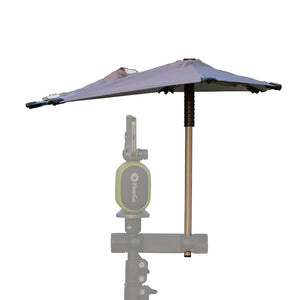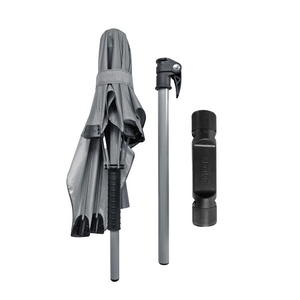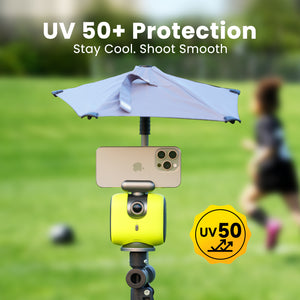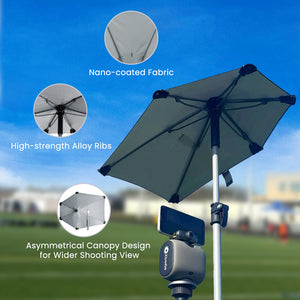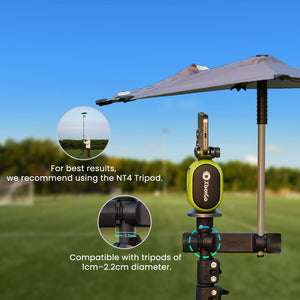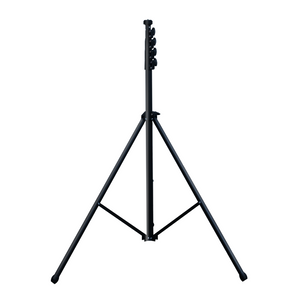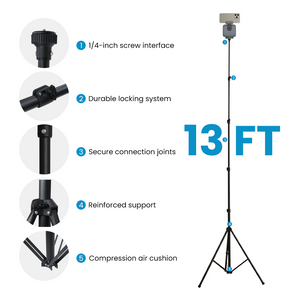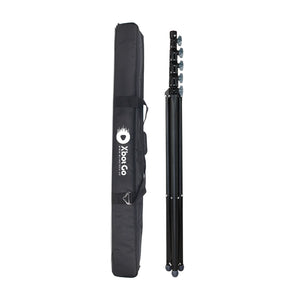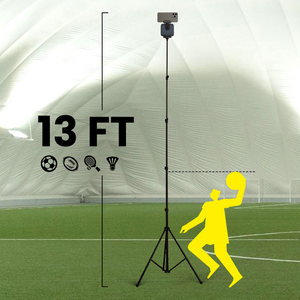XbotGo Chameleon AI Sports Camera
How Many Hockey Players On Ice? NHL Roster Rules Explained
Ever watched a hockey game and wondered why players keep jumping over the boards like they're escaping a sinking ship? You're not alone.
Here's the quick answer: Six players per team are on the ice at once—three forwards, two defensemen, and one goalie. But a full NHL team dresses 20 players for each game, pulled from an active roster of up to 23 players.
That's just the tip of the iceberg though. The real story involves line rotations, strategic substitutions, and roster rules that change dramatically between the NHL and your local youth league. Let's break it down.
The 6-Player Foundation: Who's Actually On The Ice
Picture this: You're watching your first hockey game. The puck drops, and suddenly there's organized chaos. But within that chaos, there's a simple structure.
Each team has exactly six players on the ice during regular play:
- 1 Goaltender - The last line of defense (and often the most superstitious player on the team)
- 2 Defensemen - The bodyguards who'd rather block a 100mph puck than let you near their net
- 3 Forwards - The glory seekers hunting for goals
This isn't random. Early hockey was absolute madness—imagine 30 players crammed onto the ice like a frozen mosh pit. The six-player system emerged because it creates the perfect balance between skill showcase and team strategy.
When Six Becomes Five (Or Four)
Hockey loves breaking its own rules. During penalties, teams play "short-handed" with only five or even four players. It's like trying to defend your house with half your security team on a coffee break.
Teams can also "pull" their goalie for an extra attacker. Yes, they voluntarily leave their net empty. It's hockey's version of going all-in at a poker table—desperate, exciting, and surprisingly effective about 30% of the time.
The 20-Player Game Roster: Your Hockey Squad
Walk into any NHL locker room on game night, and you'll find 20 players suiting up:
- 18 Skaters (usually 12 forwards + 6 defensemen)
- 2 Goalies (starter + backup)
But here's where it gets interesting. These 20 come from a pool of 23 players on the active roster. The unlucky three? They're "healthy scratches"—fully capable players who drew the short straw that night. They watch from the press box, probably critiquing their teammates' PlayStation skills from the night before.
The 11-7 Formation: Hockey's Chess Move
Sometimes coaches get creative and dress 11 forwards with 7 defensemen instead of the standard 12-6 split.
Why? Picture the Edmonton Oilers with Connor McDavid. He can play 25+ minutes per game without breaking a sweat (okay, he sweats, but you get it). By dressing fewer forwards, the coach can double-shift McDavid, creating matchup nightmares for opponents.
It's like bringing a Formula 1 car to a go-kart race—technically legal, definitely effective.
The Line System: Hockey's Secret Rotation Strategy
Here's where hockey gets beautifully complex. Those 12 forwards aren't just thrown onto the ice randomly. They're organized into four distinct lines, each with its own personality:
First Line: The Superstars
Think of them as the Avengers of your hockey team. They score the goals, make the highlight reels, and probably have the best sponsorship deals. Playing 18-22 minutes per game, they're expected to carry the offensive load.
Second Line: The Reliable Veterans
Your second line is like your favorite restaurant—not quite Michelin-starred, but consistently excellent. They chip in 15-18 minutes of quality hockey, keeping the pressure on when the superstars need a breather.
Third Line: The Grinders
These guys are hockey's blue-collar workers. Their job? Make life miserable for the opponent. They finish every check, win every board battle, and occasionally surprise everyone with a crucial goal. They're on ice for 12-15 minutes of controlled chaos.
Fourth Line: The Energy Boost
Playing just 8-12 minutes, the fourth line is your team's espresso shot. They might include:
- Rookies getting their feet wet
- Enforcers who solve problems with their fists
- Veterans who've seen it all and just want to help
Why 45-Second Shifts?
Hockey players change more often than a teenager's TikTok feed. Most forwards play 45-60 second shifts before bolting for the bench.
Why so short? Because hockey is exhausting. Players' heart rates regularly exceed 180 beats per minute. Imagine sprinting while someone tries to body-check you into next week. You'd want a break too.
Beyond Game Day: The Full Team Picture
The 23-Player Active Roster
Those 20 game-day players come from an active roster of up to 23. The extra three provide:
- Insurance for injuries (because hockey players collect bruises like Pokemon cards)
- Flexibility for different matchups
- Motivation for the regulars to keep performing
The 50-Contract Reality
Here's where it gets wild. NHL teams can have up to 50 players under contract, including minor leaguers. They can even hold rights to 90 players total, including draft picks who haven't signed yet.
It's like having a closet full of clothes but only being able to wear 20 outfits to work. The rest stay in storage (the minor leagues) until needed.
Youth Hockey: Where More Is Actually More
Forget everything I just told you about optimal roster sizes. Youth hockey plays by different rules, and thank goodness for that.
The Development-First Approach
Youth teams often carry 16-20 players. Why so many? Because winning the Squirt B championship matters less than developing future players.
A Wisconsin youth coach put it perfectly: "Do you want to win now or make as many players better for later?" Most youth programs choose development, carrying larger rosters to give more kids a chance to improve.
Equal Ice Time (Sort Of)
Youth coaches typically promise equal ice time early in the season. By playoffs? That fourth-line center might see less action than a mall security guard on Christmas morning. But that's okay—kids learn about competition while still getting development opportunities.
Parents, take note: If your 10-year-old isn't getting superstar minutes, relax. Studies show players on larger rosters improve more over full seasons and stick with hockey longer. Your future NHLer might just be a late bloomer.
Making Sense of the Madness: Practical Viewing Tips
For New Fans
Next time you watch hockey, try this:
- Pick one forward line and watch only when they're on ice
- Notice the shift length—you'll see them hustle to the bench after 45-60 seconds
- Watch for the fourth line—they usually appear after TV timeouts when the top lines need extended rest
For Parents Navigating Youth Hockey
Your child's team has 18 players and little Jimmy only played two shifts? Don't panic. Youth hockey prioritizes long-term development over short-term glory. Those "bench warmers" often become tomorrow's stars.
Focus on skill development, not ice time. If your child improves each season, you're winning—regardless of the scoreboard.
The International Hockey Twist
Different leagues, different rules:
- NCAA College: Up to 30 players on roster, but only 18 scholarships to spread around
- Olympics: 23-player rosters with strict nationality requirements
- European Leagues: Import player limits create unique roster puzzles
Each variation reflects local hockey culture and competitive priorities.
Why This All Matters
Understanding hockey rosters transforms you from casual observer to informed fan. You'll appreciate:
- Why coaches juggle lines like a circus performer
- How salary caps force tough roster decisions
- Why your beer league team with 10 skaters is always exhausted
Hockey's roster complexity mirrors life—it looks chaotic on the surface, but there's beautiful logic underneath. Whether you're watching McDavid dance through defenders or your kid's first Mite game, you now understand the method behind the madness.
The Bottom Line
So how many players on an ice hockey team? The answer depends on your perspective:
- 6 on the ice (the visible game)
- 20 dressed (the ready reserves)
- 23 active (the full arsenal)
- 50 contracted (the extended family)
- 90 controlled (the future pipeline)
Each number reveals hockey's unique blend of immediate action and strategic depth. Whether you're watching McDavid's magic or your kid's first game, understanding these roster layers transforms you from casual observer to informed fan.
Hockey isn't just about having the best players—it's about managing them smartly. And that makes every roster decision, from NHL trades to youth team ice time, a fascinating piece of the larger puzzle.
Now grab some popcorn and enjoy watching those six players fly around the ice, knowing there's a whole management system working behind every shift change.
XbotGo Chameleon AI Sports Camera
Capture every moment with AI-powered tracking. Perfect for coaches, parents, and athletes who want seamless footage without manual filming.







 Soccer
Soccer Basketball
Basketball Ice Hockey
Ice Hockey Rugby
Rugby










